ADMINISTRATION
 Tammy Peterman | University of Kansas Hospital
Tammy Peterman | University of Kansas Hospital
For Tammy Peterman, assisting on house calls during her high-school years was par for the course—she was the daughter of a doctor in rural Kansas. “I had the opportunity to watch him, and later work alongside him, which enabled me to see firsthand the difference superior health care and great clinicians can make in the lives of patients,” she said.
Peterman, now chief operating officer, chief nursing officer and executive vice president at the University of Kansas Hospital, says her passion for health care and nursing grew from witnessing her father’s compassion and care. “I knew I wanted to carry that philosophy and culture of caring with me as I went into nursing.”
Despite holding an administrative title, Peterman insists: “I am a nurse—one with a great appreciation for the work I see carried out every day by an extraordinary staff of health-care providers.” There is a guiding formula, she says, behind the hospital staff’s performance, one that includes a focus on the patient, on service and on quality. Customer service and patient satisfaction are keys at the hospital, she says.
Thanks to her foundation in nursing—she started at the hospital more than 25 years ago as a staff nurse—she understands and appreciates the importance of a strong nursing program. “Because nurses are at the patients’ bedsides 24 hours a day, they can impact outcomes through the quality of care they provide,” she says. “I am continually impressed with the great work I see.”
It’s all about merging science with compassion, she says, which allows the hospital’s nurses to provide high-quality care to some of the most acutely ill patients in the region. “In partnership with an amazing group of physicians and other clinicians,” she says, “the care provided leads to the achievement of the great patient outcomes.” All of which is in line with Peterman’s personal philosophy of health care delivered with empathy.
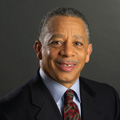 John W. Bluford | Truman Medical Centers
John W. Bluford | Truman Medical Centers
“Making a difference in the quality of life for people and for the communities they live in,” is what Truman Medical Centers President and CEO John W. Bluford calls his greatest satisfaction from working in health-care administration.
Backed by a family history of physicians and dentists, Bluford said he chose a career in health-care administration, in part, because a “business-school recruiter convinced me that I could impact more lives in hospital management and health-care policy than one-on-one physician interfaces.”
And hospital management is exactly what Bluford exceeds at. Under his leadership, Truman Medical Center has increased its profit by 150 percent and augmented commercial insurance revenue sixfold. In 2005, the medical center was named one of the top five academic medical centers in the country by the University Health System Consortium. Before joining TMC in 1999, Bluford served as an evening administrator at Cook County Hospital in Chicago, then in several leadership positions at Hennepin County Medical Center in Minneapolis, Minn.
Bluford, who has been recognized by Modern Healthcare as one of the Most Influential People in Healthcare, has frequently received such recognition throughout his career, including Kansas City Nonprofit Professional of the Year Award (2011), the Missouri Hospital Association’s Distinguished Service Award (2009) and the Urban League Difference Maker Award (2006), among others. In 2011, he was elected chairman of the board of the American Hospital Association’s board of trustees.
Of all his accolades and career successes, Bluford cites “changing the culture and creating a can-do, winning attitude” as his greatest source of pride among his achievements at the hospital.
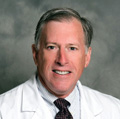 Michael Borkon | Saint Luke's Mid-America Heart Institute
Michael Borkon | Saint Luke's Mid-America Heart Institute
Patient by patient, Michael Borkon has built a reputation for heart-transplantation excellence. That success, he’ll tell you, is not his own; it belongs to Saint Luke’s Mid-America Heart Institute, and to the physicians and nurses who have brought the program so far since its inception more than 26 years ago.
Validation of their work, he says, can be found in the metric that matters most to heart-transplant patients: survival rates. “When you compare our results to the national level at 10 years, we have at least a 10 percent better survivorship, and all of the benchmarks short of that are better than the national averages, as well,” he says.
Borkon was a senior in high school in 1968, when the world marveled at news out of South Africa that a human heart had been successfully transplanted for the first time. “I was absolutely knocked off my feet by it,” he says. Seven years later, he earned his medical degree at John Hopkins University School of Medicine, and a specialization in cardiothoracic surgery followed.
Just a year after the heart institute opened in Kansas City, Borkon joined the staff. More than 500 heart transplants have been performed there, a figure that Borkon says is a self-reinforcing aspect of success: “The large volume we do gives you the opportunity to generate high-quality results,” he says. “That affords the citizens of Kansas City the knowledge that if they are on the transplantation list at Saint Luke’s, 80 percent in six months will receive a new heart, compared to only 20 percent across the country.”
His well-known penchant for compassionate care, say those he works with, extends not only to the patients he’s treating; it stems from a deep appreciation for those donor families who, despite the intensity of their own grief at a time of profound loss, are willing to extend the gift of life to a perfect stranger.
PROFESSIONAL SERVICES
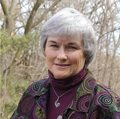 Sally Schwab | Spiritual Health Services & Hands of Hope Hospice/Heartland Health
Sally Schwab | Spiritual Health Services & Hands of Hope Hospice/Heartland Health
Sally Schwab has been called again and again into a ministry of caring for people who are ill and suffering. As the team leader for Spiritual Health Services and Hands of Hope Hospice, Schwab says her work is about spiritual care, education, ethics, palliative care and hospice. “My personal vision is to live my life doing justice, loving mercy and walking humbly with God,” she says. “My current work in end-of-life care truly embodies that vision.” With a professional vocation in pastoral ministry, Schwab has held various jobs that have given her the opportunity serve those in need. “My early years in ministry taught me courage and invited me to take a stand and to speak up for what is just and caring,” she says.
It was because of personal losses—the deaths of her father, brother and mother—that she says her commitment to serve deepened. “I became a person who personally experienced the pain of grief and loss, as well as one who accompanies others in their pain and loss,” she says.
Schwab remembers one patient, especially, whose story grounds her in what it means to care for others. During her time at the VA Medical Center, she was caring for a young man dying of cancer who had been estranged from his church and faith. “He had begun to share with me his life story and to engage in life reviewing, focusing on what his living and dying meant to him,” she says. Later on, when the patient was nearing death, Schwab was called into his room. “He indicated to me that he wanted to restore his relationship with his faith, and he wanted his family to participate with him in the sharing of Eucharist.”
Schwab said she and his family gathered, sharing communion and reciting the Lord’s Prayer. “The late afternoon sun penetrated through the window and gently illuminated the patient,” she says. And as the patient became very still and at peace, she says, he died.
“This story profoundly teaches me the importance of who we are and what we do at the bedside in the end-of-life care.”
 Paula Miller | University of Kansas Hospital
Paula Miller | University of Kansas Hospital
As a clinical lab quality manager at The University of Kansas Hospital, Paula Miller knows a thing or two about the importance of customer service. In addition to her lab duties, which include ensuring that results are correct, timely and delivered to those who need them, she also spends every Wednesday training hospital employees—everyone from volunteers to cleaning crews to top executives—in customer service.
Through those sessions, she has trained more than 12,000 hospital employees. In this position, she orients new instructors and supports all department directors with training, and coaches employees to ensure their progress in improving services to hospital patients. Fundamentally, successful customer service is all about the patients, making them feel comfortable and answering their questions, she says.
“By focusing on the patient as a person [our customer-service focus], we are able to both meet their needs as well as their health care needs,” she says. “This focus on service also helps build their trust in us, and that trust is critical for them to open up and provide all the information we need to help them get better and go home.”
Her role also allows her to have contact with patients. “When a farmer from northeast Kansas is life-flighted to KU Hospital because their hometown has said ‘I cannot take care of you,’” Miller says, families of those patients are filled with fear and such questions as how long before they can talk to their loved one, where they’ll stay, what they’ll eat, or how long they have to be in Kansas City. “I can go talk to them; I make eye contact, smile and introduce myself; I start talking and find our commonalities,” she says. “I reassure them they are in the right place with the right staff to help them.” “I see them relax,” she says, “and I know I am where I am supposed to be.”
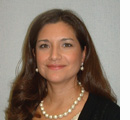 Denise Martinek | Shawnee Mission Medical Center
Denise Martinek | Shawnee Mission Medical Center
“I was raised with the belief that you take care of others, especially your family,” says Denise Martinek, executive director of Women’s & Children’s Services at Shawnee Mission Medical Center. Martinek, who says she always knew she wanted to take care of women and children, oversees the birth center at the hospital [which has 4,000 births annually], is responsible for an $18 million budget and is leading the hospital’s $42 million construction of a new birth center.
A nurse herself, she says she “grew passionate about the obstetrical population” after her own experiences giving birth to three children. “I learned that the nursing care and hospital environments and culture are extremely important and can make the difference in a mother and her family’s experience.” She also noted the importance of helping patients have the experiences they are looking for. “Every day we are encouraged to provide much more than medicine.” She previously worked as director of Maternal Child Services at Lawrence Memorial Hospital, where she says she learned the importance of connectedness to your community and providing services that meet the needs of your community.
A proponent of community involvement, Martinek participates with a number of groups, including March of Dimes and Safe Kids.
“I get so much satisfaction from helping a mom and dad learn how to install a car seat in their vehicle and how to properly secure their children in the car seat,” she says of her work with Safe Kids, a nonprofit organization committed to eliminating preventable childhood injuries.
AUXILIARY STAFF
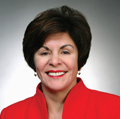 Silvia Torres | Children's Mercy Hospital
Silvia Torres | Children's Mercy Hospital
Silvia Torres has been behind the scenes of the largest department at Children’s Mercy Hospital for nearly 20 years. And part of her success has been backed by her kindness and compassion for patients and fellow colleagues. “If I can make someone’s day better,” she says, “I’ll try. My wonderful job and work environment give me that opportunity.” She’s senior executive secretary to the hospital’s co-chief operating officer and executive vice president, drawing on more than 35 years of administrative health-care experience. “Personally, I discovered that I connected with clinical staff with ease,” says Torres. “It gave me a sense of pride and accomplishment to be connected with people that were so highly edu-cated and intelligent. It also challenged me to further my education so I could be more effective.”
Working in health care has granted Torres an “opportunity to help others at their most vulnerable time when they are in pain or ill,” she says. Throughout her career, she has often talked with patients in the waiting room, offering them coffee, soda, water or cookies and making them feel as comfortable as possible. “I cannot do eye surgery or remove a brain tumor, but this is something I can do,” she says. Torres says every day is “an exciting day” at Children’s Mercy, in part because of the opportunity to support the work of those who help the most and the satisfaction to have assisted many “as they grew into their roles and education paths,” she says. Though she admits she always has to be on her toes and flexible in her job, she says she tries to do everything with a smile on her face. Outside of work, Torres is involved in many community groups, including Harvest Society, Kansas City Symphony [a past president], Northland Giving Circle, St. Andrew’s Catholic Church [where she is responsible for the shut-in ministry and prayer group], the National Cursillo Movement and the National Golf Club.
 Nancy Snyder | Associates in Family Care/Olathe Health System
Nancy Snyder | Associates in Family Care/Olathe Health System
Nancy Snyder has health-care work in her blood. “My family has always been involved in the health-care field,” she says, “either directly with patient care or indirectly in clerical/administrative positions.”
Snyder’s career with Associates in Family Care in Osawatomie, where she’s a referral specialist, has spanned 22 years. In that time, she has seen a lot, including the office’s expansion project that doubled the size of the clinic. She also recalls “going from a big old book to keep the doctors’ schedules to a computer program to do it for us,” she says. “We so knew it wouldn’t work! But, of course, it did.”
In her position, Snyder frequently works with patients to inform them about appointments or disentangle the confusion that can come about from health-care insurance and billing issues. “I spend part of my day on the phone, scheduling appointments for our patients with outpatient facilities and specialists’ offices,” she says. “I do spend a good part of my day on insurance Web sites to get authorizations for outpatient procedures.”
Although Snyder has transitioned to a semi-retired status, working only three days a week, she says she’s still very busy handling the faxing of records, taking care of paperwork, advocating on behalf of patients and other doctors, and helping calm the nerves of patients who are anxious about insurance issues.
“There have been times when patients and/or families have thanked me for listening, for giving reassurance that regardless of the medical outcome, we would be here for them.” What she enjoys most, she says, is being able to work with and talk to patients. “Knowing that what I do is important to the positive outcomes of the patient care and doing a good job gives me great satisfaction.”
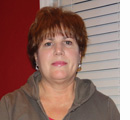 Joy Macek | Providence Medical Center
Joy Macek | Providence Medical Center
Sometimes all you need is a warm blanket, says Joy Macek, emergency-services tech at Providence Medical Center. “People are always cold in the emergency room,” she says. “I think a warm blanket is the biggest soother for a lot of patients. That is the best feeling in the world.”
Macek began her career in health care more than 30 years ago at the former Bethany Medical Center, in patient registration, and later served as the unit secretary in the emergency services department. She transferred to Providence Medical Center after the two hospitals became affiliated, in the same unit secretarial role. At age 50, however, she decided to go back to school to become a certified nursing assistant.
“I knew I wanted to do something more than what I was doing,” she says. “When I turned 50, I just decided that I would do something more. I just didn’t want to go through life and not have something where I stepped out of my little box. It was a big step for me to go back to school and become a CNA.”
What she enjoys most, she says, is working side-by-side with nurses, aiding them as much as possible, and “being able to help patients feel better. Even if people are in pain, you can do something to help them. It’s a good feeling.”
While the hustle and bustle of the emergency-room atmosphere can be intense, Macek says she enjoys the busyness and working with patients. “I remember this one elderly lady who I was taking care of, and she noted how thorough I was and asked me if I wanted to come take care of her,” she says. “It made me feel good.”
As for making the leap out of her comfort zone and going back to school at age 50, “It makes me feel like I actually made myself a better person by doing this,” she says. “I feel like I really can help take care of people.”